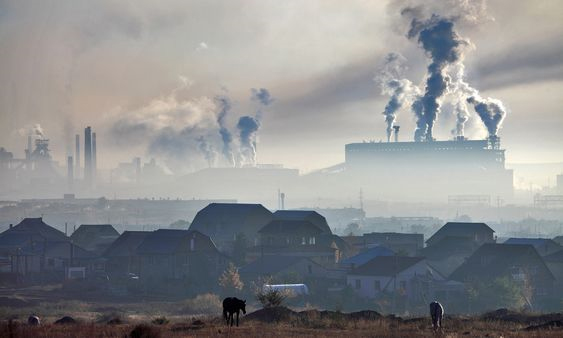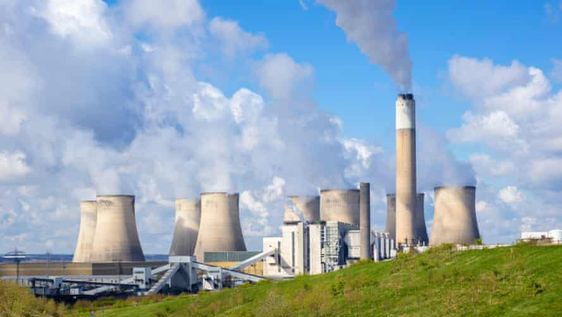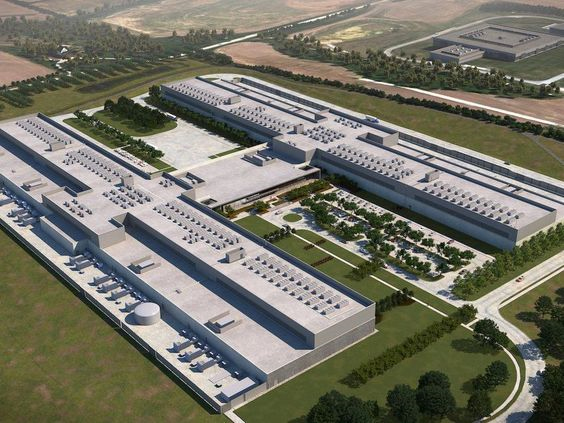The Green Factory of the Future
Industrial companies have an enormous carbon footprint. Their production and logistics operations account for more than half of all global carbon dioxide equivalent (CO2e) emissions from fuel combustion. Considering current trends, emissions from production and logistics would need to decrease by approximately 45% by 2030 to be on a path to meet the Paris Agreement’s 1.5°C target for limiting the global temperature increase. As longstanding environmental concerns intensify, industrial companies are feeling increasing economic pressure to tackle the problem.

Recognizing the need for action, leading companies are implementing initiatives to decarbonize their operations. Moreover, some companies have gone further and started to require their business partners in the supply chain to demonstrate a commitment to decarbonization as well. The result is a convergence of environmental and eco¬nomic imperatives that all industrial companies must be prepared to address. The solution is a concept that we call “the green factory of the future,” in which the integrated application of decarbonization measures reduces net emissions to zero.

To better understand the opportunities and challenges that decarbonization presents, a BCG study examined expectations for and adoption of decarbonization measures in industrial operations. The study focused on the results of a global survey of nearly 1,200 operations executives from numerous producing industries. (See “About the Study.”) This survey was conducted before the COVID-19 pandemic spread globally. However, although the pan¬demic has altered some short-term priorities, the climate challenge and the urgency to respond to it remain unchanged. In the middle term, the actions described in this report will continue to be relevant and may even have gained significance. Indeed, as companies revamp their strategies to win the post-pandemic future, they have a unique opportunity to focus on climate action.
The study found that industrial companies want to reduce their carbon footprint, with more than three-quarters of them viewing decarbonization as a high priority. So far, how¬ever, most companies have struggled to achieve their goals. Only 13% of survey respondents say that their company has fully implemented decarbonization measures in their production and logistics. The biggest obstacle to more aggressive action seems to be concern that the initiatives will raise conversion costs.

We believe that industrial companies should not regard environmental sustainability as a threat to economic sustain¬ability. Indeed, as pressure intensifies to pursue decarbonization throughout the industrial supply chain, environmental and economic sustainability will become increasingly difficult to separate. Although the challenges are significant, the results of our study show that companies can implement win-win actions that benefit the environment and create financial value. The keys to success are to identify the most effective decarbonization measures and to evaluate the economic impact of adopting these measures in a way that considers factors beyond conversion costs—such as getting ahead of regulations, attracting investors, and winning new customers. By using a rigorous evaluation process, a company can ensure that environmental and economic sustainability go hand in hand in the green factory of the future.

WHY SUSTAINABILITY MATTERS IN OPERATIONS
Our study focused on environmental sustainability in industrial operations, comprising production and logistics. We gave special emphasis to greenhouse gas (GHG) emissions, which are predominantly CO2 but also include such gases as methane and nitrous oxide. (See “The Basics of Sustainability in Operations.”)
ENVISIONING THE GREEN FACTORY OF THE FUTURE

Given the clear need for action to reduce GHG emissions in operations, what targets are reasonable? Companies usually discuss goals for reducing GHG emissions in terms of meeting the 1.5°C target derived from the 2015 Paris Agreement, in which more than 190 countries committed to taking steps to limit the global average temperature increase to 1.5°C above pre-industrial levels. To achieve the 1.5°C target, countries would need to reduce their overall net emissions to zero by around 2050, with incremental reductions along the way. Unfortunately, many countries—including the top five emitters (China, the US, the European Union, India, and Russia)—are falling short of meeting their goals. The concrete actions we discuss below can bolster efforts to achieve the target.
As of 2019, global GHG emissions from fuel combustion totaled approximately 33 gigatons of CO2e (Gt CO2e). To be on a path to achieve the 1.5°C target, net emissions would need to fall to 18 Gt CO2e by 2030. However, extrapolating the current trend for global emissions to 2030 yields emissions of 33 Gt CO2e—a shortfall of 15 Gt CO2e against the incremental goal for meeting the 1.5°C target. To close this gap by 2030, GHG emissions from production and logistics would have to decrease by 45% relative to the current trend. (See Exhibit 2.) From that point, incremental reductions would have to continue for two more decades until net emissions dropped to zero.
ECONOMIC AND ENVIRONMENTAL SUSTAINABILITY GO HAND IN HAND
Although study participants indicate that companies are committed to reducing carbon emissions, concerns about incurring higher costs pose a major obstacle to taking necessary action in support of these good intentions. Nearly two-thirds of participants (63%) believe that decarbonization will increase their conversion costs (total manufacturing costs minus material costs) by 2030. Only 21% believe that they can lower their conversion costs through decarbonization by 2030. A similar picture emerges in connection with the development of investments and implementation costs for carbon-reduction applications: 63% of participants believe that these costs will increase during the next five years, versus only 18% who believe that they will decrease.
Unavoidably, some decarbonization measures will increase conversion costs or require additional investments. Nevertheless, by selecting the right measures, a company can implement win-win actions that help the environment and generate financial value.
Thank you for reading this post, don't forget to subscribe!
source : bcg.com


